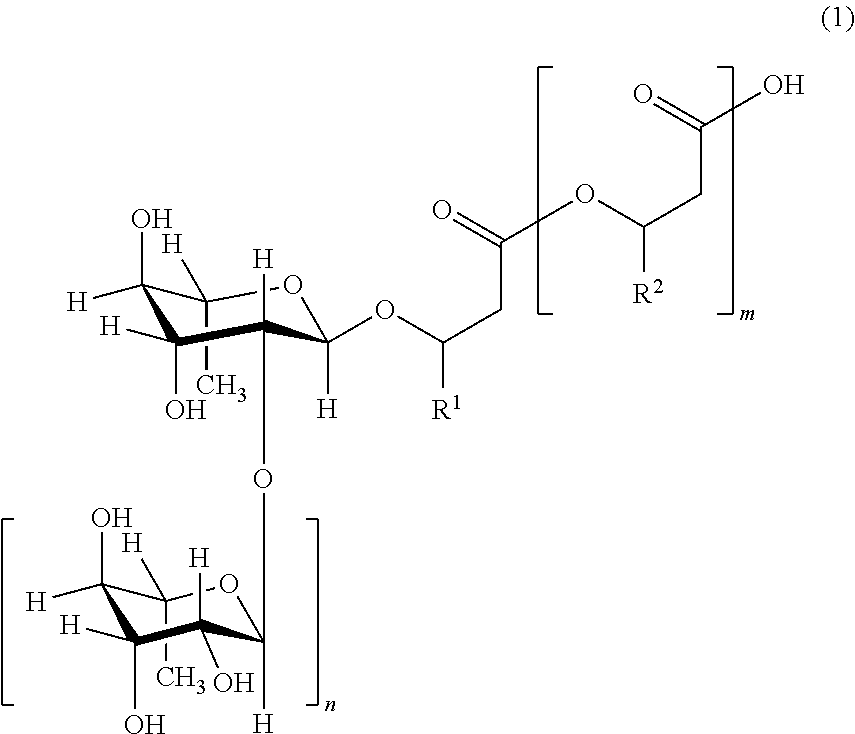Co-Culture of Myxobacteria and Pseudomonas for Enhanced Production of Biosurfactants and Other Metabolites
a technology of biosurfactants and pseudomonas, which is applied in the field of co-culture of myxobacteria and pseudomonas for enhanced production of biosurfactants and other metabolites, can solve the problems of high cost per propagule density, unfavorable large-scale production of microorganisms and their growth by-products, and commercialization of microorganism-based products
- Summary
- Abstract
- Description
- Claims
- Application Information
AI Technical Summary
Problems solved by technology
Method used
Image
Examples
example 1
vtion of M. xanthus and Strain 111 For Production of Biosurfactants And Hydrocarbons
[0160]Pseudomonas chlororaphis “strain 111” is grown in a small-scale reactor for at least 48 hours to produce a 3.0-5% inoculum. Myxococcus xanthus is grown in a small-scale reactor for at least 4 days to produce a 0.6-1.0% inoculum. The M. xanthus inoculum can be sampled and tested using slide streaking after 3 days to test for purity.
[0161]A fermentation reactor is inoculated with the two inocula. The nutrient medium comprises:
Glucose1 to 5 g / LCasein peptone5 to 20 g / LGlycerol10 to 30 g / LYeast extract1 to 5 g / LKH2PO41 to 5 g / LNa2HPO41 to 5 g / LNH4NO30.1 to 0.5 g / LMgSO4•7H2O0.01 to 0.1 g / LFeSO40.001 to 0.05 g / LTrace metals0.1 to 1.0 g / L
[0162]Additionally, the nutrient medium includes fine grain particulate anchoring carrier comprising cellulose (1.0 to 5.0 g / L) and / or corn flour (1.0 to 8.0 g / L).
[0163]An aqueous base solution comprising 20% NaOH is fed into the reactor to adjust and maintain pH auto...
example 2
Co-Cultiavtion of M. xanthus And Strain 306 To Produce Biosurfactants
[0170]Pseudomonas chlororaphis strain 306 is grown in a small-scale reactor for at least 48 hours to produce a 3.0% inoculum. Myxococcus xanthus is grown in culture flasks (2L working volume) for at least 4 days to produce a 0.5% inoculum. The M. xanthus inoculum can be sampled and tested using slide streaking after 3 days to test for purity.
[0171]A fermentation reactor is inoculated with the two inocula. The nutrient medium comprises:
Glucose1 to 5 g / LCasein peptone5 to 20 g / LGlycerol10 to 30 g / LYeast extract1 to 5 g / LKH2PO41 to 5 g / LNa2HPO41 to 5 g / LNH4NO30.1 to 0.5 g / LMgSO4•7H2O0.01 to 0.1 g / LFeSO40.001 to 0.05 g / LTrace metals0.1 to 1.0 g / L
[0172]Additionally, the nutrient medium includes fine grain particulate anchoring carrier comprising cellulose (1.0 to 5.0 g / L) and / or corn flour (1.0 to 8.0 g / L).
[0173]An aqueous base solution comprising 20% NaOH is fed into the reactor to adjust and maintain pH automatically ...
PUM
 Login to view more
Login to view more Abstract
Description
Claims
Application Information
 Login to view more
Login to view more - R&D Engineer
- R&D Manager
- IP Professional
- Industry Leading Data Capabilities
- Powerful AI technology
- Patent DNA Extraction
Browse by: Latest US Patents, China's latest patents, Technical Efficacy Thesaurus, Application Domain, Technology Topic.
© 2024 PatSnap. All rights reserved.Legal|Privacy policy|Modern Slavery Act Transparency Statement|Sitemap

